Lecture 2 - outline
Paleolithic - continued
continued from Sexual and Magical Pendants:
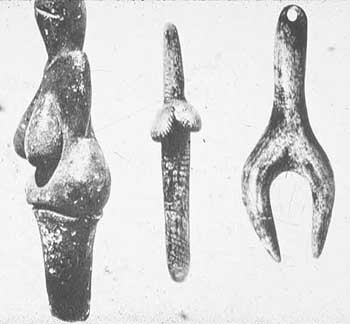
small fertility 'totems' from Moravia, Czech Republic
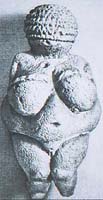
Venus of Willendorf
c. 24,000-22,000 B.C.
limestone |
"Venus" or fertility figures
discussed -
Two of the most famous are pictured here.
They were discovered in 1908 and 1911.
Note the anonymous nature of the figure to the left, with
decorative facial covering, and the diminutive size of the
skull (and therefore face) of the figure on the right, emphasizing
their sexuality and ignoring any modern concept of individuality.
Of particular interest is the horn, likely a male fertility
symbol, strangely reminiscent of the more contemporary 'horn
of plenty'. This figure holds what may be her pregnant belly.
|
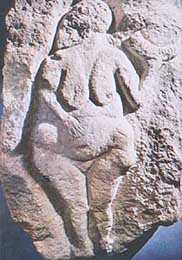
Venus of Dordogne, limestone
("Venus of Laussel ")
c.23,000 B.C.
|
Venus
of Willendorf - Natural History Museum, Vienna
"Venus
with Horn" - Musee Aquitaine
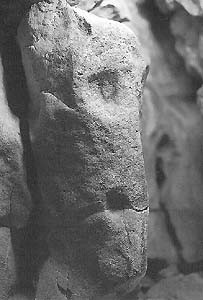 image: VCU Slide Library
image: VCU Slide Library |
Natural formations suggesting other forms -
Here we see Nature providing an impetus to the imagination
of the prehistoric artist; the eye was merely drawn into
the depression of the 'eye socket' to the left, while the
muzzle of the horse on the right suggested an entire painting.
It can be theorized that the presence of such elements within
the earth, seen as symbols, reinforced a notion of 'magic'
in art.
|
|
Depictions of people were rare -
Here is an especially rare 'wounded man' image.
The meaning of the bird has confounded analysts,
while the phallus may indicate life force in
the face of death or danger.
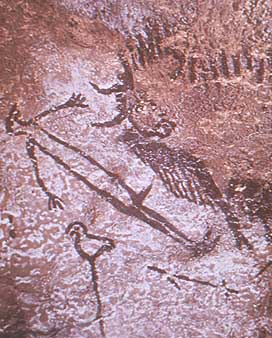
Wounded Bison attacking man
Lascaux, France 15,000 B.C.
|
Animal sculptures, very small,
perhaps hand held talismans:
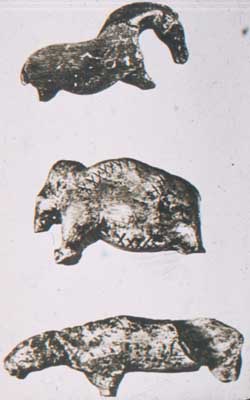
Animals Vogelherd Caves
Baden, Wurttenberg, Germany
Ivory
|
'Magic' of the art - 'spearing' the representation.
Many animal depictions have been found with many
arrowheads at their base, chipped on their surfaces,
indicating a ritualistic pre-hunt ceremony.
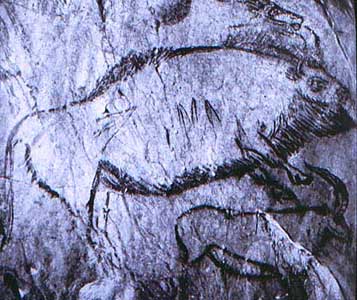
Bison struck by arrows (and an Ibex)
at Niaux, France
|
Overall Views of some of the caves, including exterior:
Lascaux
Cave - French Ministry of Culture (video) |
Archaeopark
Vogelherd - Ice Age Europe
Niaux prehistoric art caves - Don's Maps
Late Paleolithic
'Abstract' Painting style
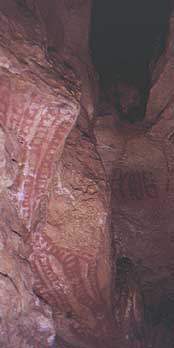
"Ladder Pictures" |
-also 'Signs'
the first purposeful 'abstract' symbols -
concepts of higher organization
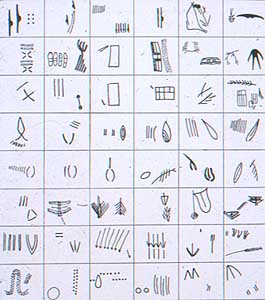
examples of paired signs |
Neolithic c. 7,000 - 2,000 B.C.
(Mesolithic - an intermediary period between paleolithic
& neolithic)
Spain as a bridge between Africa and Europe -
introduction of the bow & arrow to the 'stone' culture,
perhaps from the 'wood' culture of Africa
"mesolithic" Spanish Levant painting style
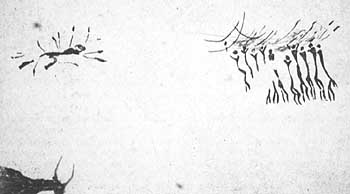
"Execution Group", Castellon, Spain, East Spanish
Style
|
"Rock Paintings" on cliffs
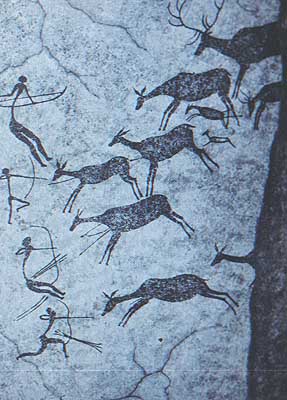
Second Hunter Style (mesolithic)
Los Caballas, Castellon Spain |
Topics:
Rise of villages / beginning of property ownership / concept of
ruling class eventually develops around religion
gardening/agriculture/animal domestication - role of women &
'separation of labor' between the sexes
Separation of art from exclusive magical context - decoration of
pottery, etc.
Rise of Mother Goddess Cult - Worship of the Dead/Ancestor Worship
Stone Monuments and Menhirs arose at end of the Neolithic period;
They began in the Mediterranean, and culminated in England:
|
|
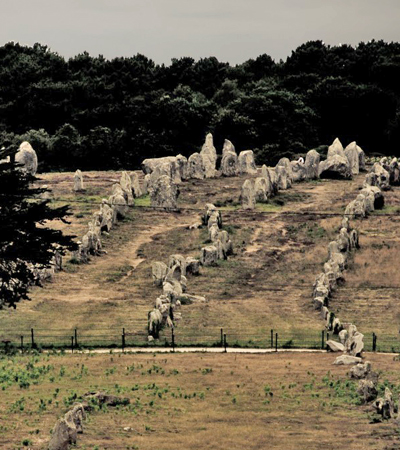
Menhirs at Carnac |
Menhirs, Obelisks
and Standing Stones - Ancient Wisdom
The Carnac
Stones, Brittany - Wikipedia
Menhirs
and Stones - Ancient Penwith
Home | Lecture
1 | Lecture 3
|
